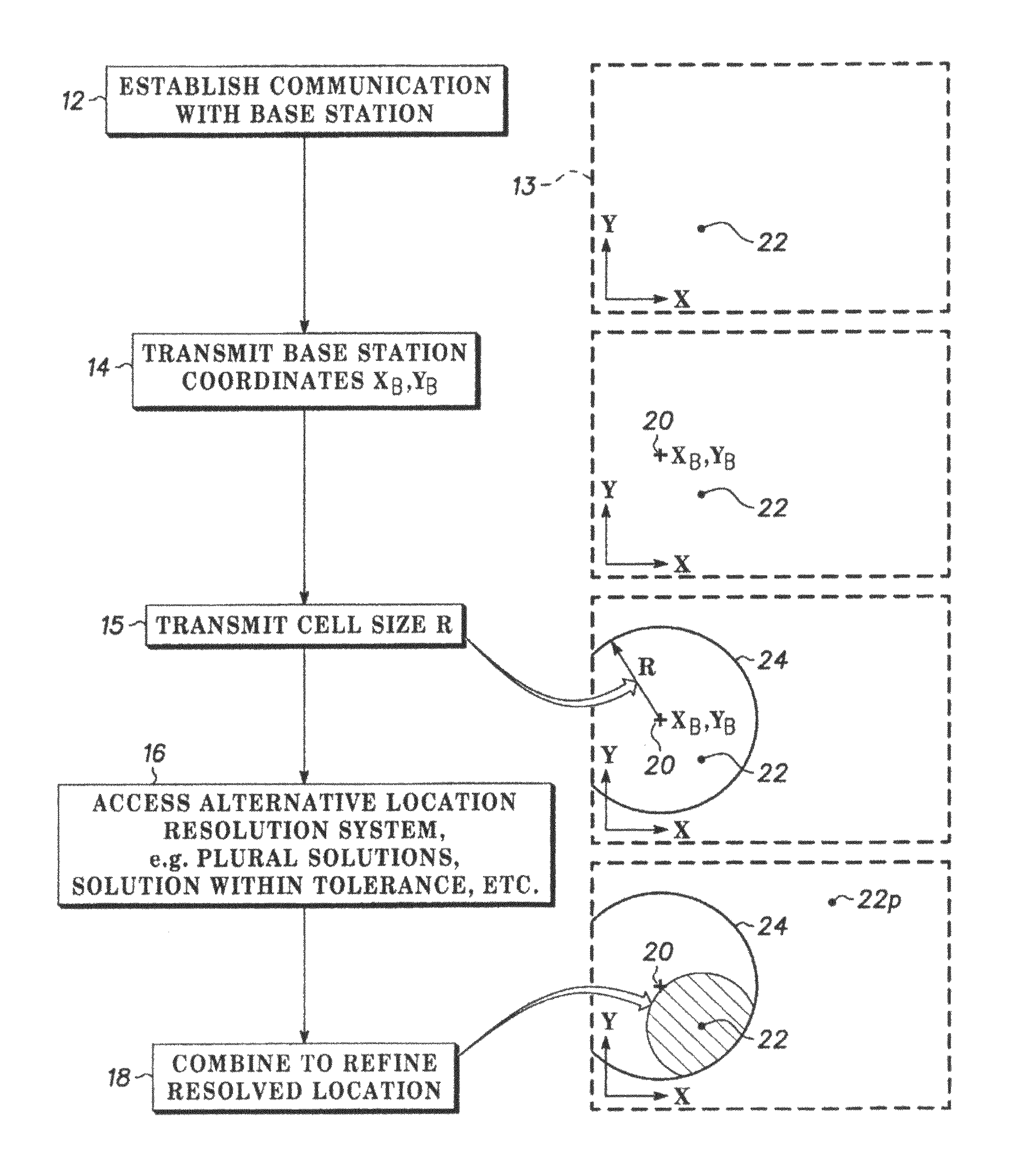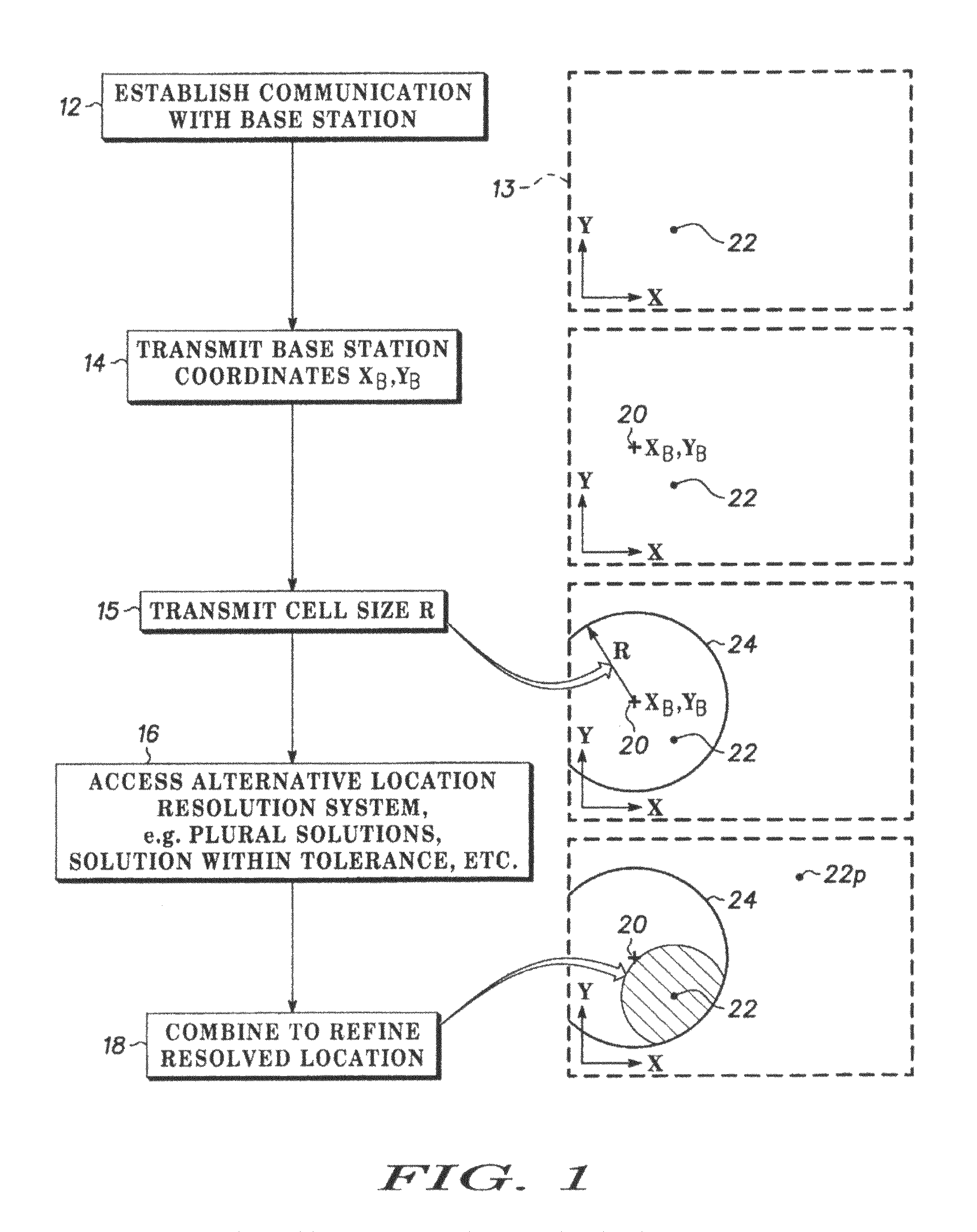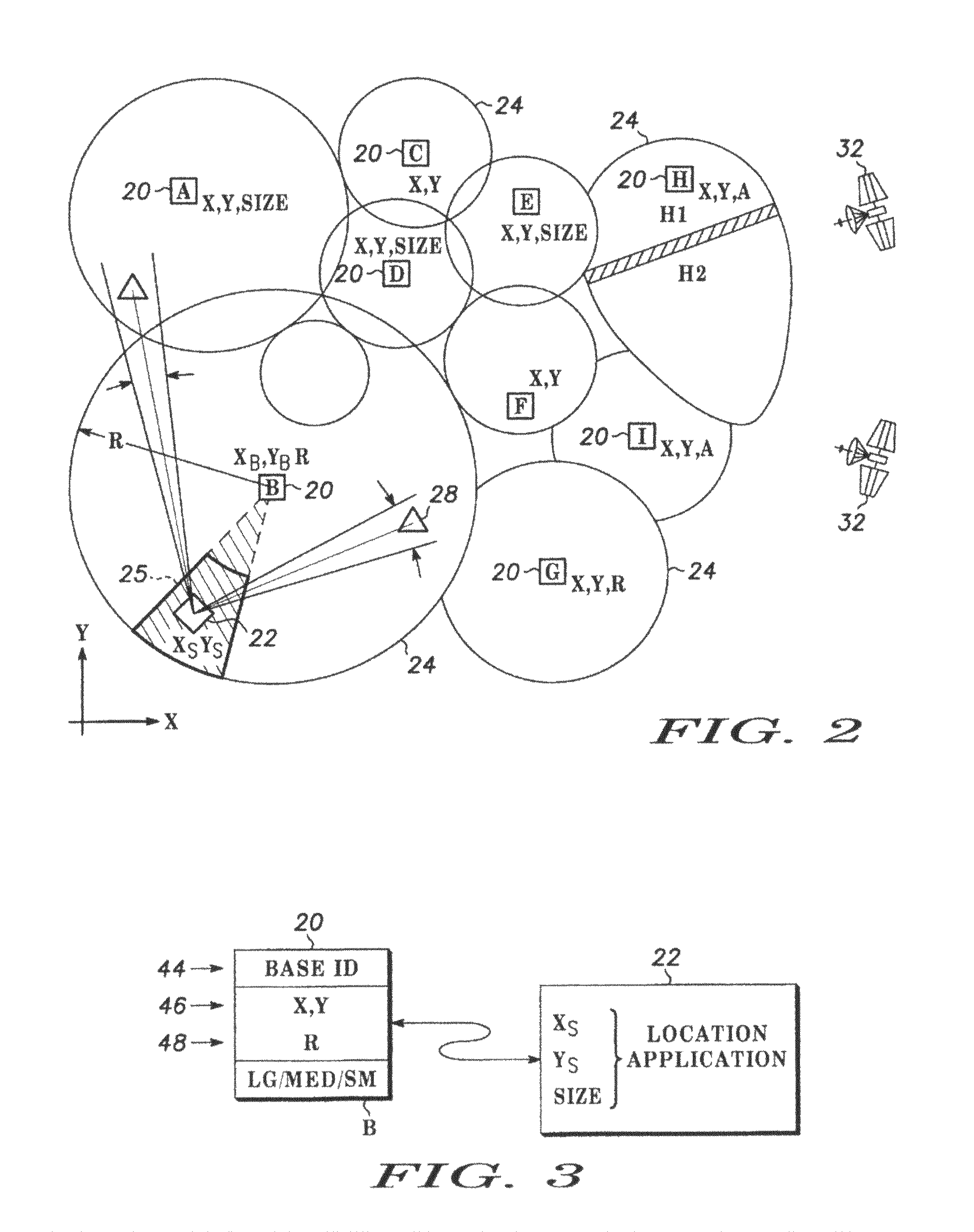Method of enabling low tier location applications
a low-tier, location application technology, applied in the direction of transmission monitoring, instruments, measurement devices, etc., can solve the problems of increasing the cost and size of the receiver, reducing the battery life, and reducing the efficiency so as to improve the efficiency and functionality of many mobile receiver applications, reduce the dependence on base station coordinates, and enhance the performance of such systems
- Summary
- Abstract
- Description
- Claims
- Application Information
AI Technical Summary
Benefits of technology
Problems solved by technology
Method used
Image
Examples
Embodiment Construction
[0020]Referring to FIGS. 1-4, preferred embodiment of the invention can be advantageously employed in a wireless communication network having distributed base stations that service wireless devices in service areas or cells. Typically the wireless devices are cellular telephones, but they can be of any type, including for example, personal digital assistants, vehicle communication systems, local or personal area networks such as Bluetooth, or the like.
[0021]FIG. 1 illustrates a series of steps according to the invention, and FIG. 2 shows the implications and benefits in certain particular situations. The base stations 20 are indicated by square symbols in FIG. 2 and are designated A through I. The wireless devices 22 (indicated by diamond symbols) operate any of various applications programs, alone or in conjunction with their users. The applications of interest concern the spatial location of the wireless devices or subscriber units 22, in their respective service areas or cells 24...
PUM
 Login to View More
Login to View More Abstract
Description
Claims
Application Information
 Login to View More
Login to View More - R&D
- Intellectual Property
- Life Sciences
- Materials
- Tech Scout
- Unparalleled Data Quality
- Higher Quality Content
- 60% Fewer Hallucinations
Browse by: Latest US Patents, China's latest patents, Technical Efficacy Thesaurus, Application Domain, Technology Topic, Popular Technical Reports.
© 2025 PatSnap. All rights reserved.Legal|Privacy policy|Modern Slavery Act Transparency Statement|Sitemap|About US| Contact US: help@patsnap.com



